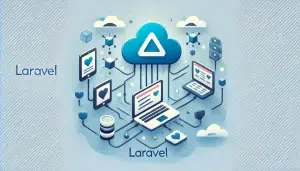Introduction
In today’s fast-evolving digital landscape, developers are increasingly turning to Headless CMS solutions to future-proof their applications. With Laravel, a leading PHP framework known for its flexibility and efficiency, integrating a Headless CMS provides unmatched scalability, omnichannel content delivery, and adaptability. In this guide, we’ll explore the integration of Laravel with Headless CMS platforms, benefits, practical implementation, and best practices.
What Is a Headless CMS?
Definition and Core Concepts
A Headless CMS is a content management system that separates the backend (content storage and management) from the frontend (content presentation). It delivers content via APIs, allowing developers to design custom frontends for various platforms.
Key Benefits of a Headless CMS
- Omnichannel Delivery: Content can be distributed across websites, mobile apps, IoT devices, and more.
- Developer Flexibility: Use modern tools and frameworks to build custom frontends.
- Scalability: Handle high traffic and diverse platforms with ease.
Popular Headless CMS options include Strapi, Contentful, Sanity, and Ghost.
Why Integrate Laravel with a Headless CMS?
Advantages for Laravel Applications
- Enhanced Scalability: Decouple the frontend and backend for better performance.
- Future-Proofing: Stay ahead with adaptable and modular architecture.
- Improved Developer Workflow: Streamline development with API-first approaches.
Common Use Cases
- E-commerce platforms with personalized shopping experiences.
- Blogs or media sites requiring multichannel content delivery.
- SaaS applications with dynamic content.
Integrating Laravel with a Headless CMS
Step-by-Step Guide
Step 1: Choose a Headless CMS
Select a CMS that fits your project requirements. For this guide, we’ll use Strapi as an example.
Step 2: Set Up the Headless CMS
- Install Strapi locally or on a server:
npx create-strapi-app my-project --quickstart - Configure your content types and add sample content in the Strapi admin panel.
Step 3: Set Up Your Laravel Project
- Create a Laravel project:
composer create-project --prefer-dist laravel/laravel headless-cms-integration - Install Laravel’s HTTP client for making API requests:
composer require guzzlehttp/guzzle
Step 4: Fetch Content via API
Here’s an example of fetching content from Strapi:
use Illuminate\Support\Facades\Http;
$response = Http::get('http://localhost:1337/api/articles');
$articles = $response->json();
Step 5: Display Content in Laravel
Pass the fetched data to your Laravel views:
public function index()
{
$response = Http::get('http://localhost:1337/api/articles');
$articles = $response->json();
return view('articles.index', compact('articles'));
}
Step 6: Customize Your Frontend
Use Laravel Blade or any frontend framework like Vue.js or React to create a dynamic and user-friendly interface.
Comparison Table: Headless CMS vs. Traditional CMS
| Feature | Headless CMS | Traditional CMS |
|---|---|---|
| Content Delivery | API-based | Coupled with presentation |
| Scalability | High | Limited |
| Frontend Flexibility | Any framework or platform | Tied to CMS templates |
| Omnichannel Support | Yes | Limited |
| Performance | Optimized for diverse platforms | May degrade with high loads |
Key Takeaways
- Headless CMS integration enhances Laravel’s flexibility and performance.
- Popular Headless CMS platforms like Strapi and Contentful offer robust API-based content delivery.
- Decoupling frontend and backend enables future-proofing and seamless omnichannel experiences.
- Use Laravel’s HTTP client to fetch and display content dynamically.
FAQs
1. What is a Headless CMS?
A Headless CMS separates the backend (content management) from the frontend (presentation), delivering content via APIs.
2. Why should I integrate a Headless CMS with Laravel?
Integrating a Headless CMS provides scalability, flexibility, and the ability to deliver content across multiple platforms.
3. Which Headless CMS platforms work best with Laravel?
Popular choices include Strapi, Contentful, Sanity, and Ghost.
4. Can I use a Headless CMS for e-commerce?
Yes, a Headless CMS is excellent for e-commerce platforms requiring dynamic content and personalized shopping experiences.
5. Is integrating a Headless CMS with Laravel difficult?
No, Laravel’s robust HTTP client simplifies API integration, making the process straightforward.
Conclusion
Integrating a Headless CMS with Laravel is a forward-thinking approach to building scalable and flexible applications. By decoupling the frontend and backend, developers can create seamless omnichannel experiences and adapt to the ever-evolving technological landscape. Whether you’re building an e-commerce platform, blog, or SaaS application, Laravel and Headless CMS integration offer a powerful combination for modern development.
For further exploration, visit:


